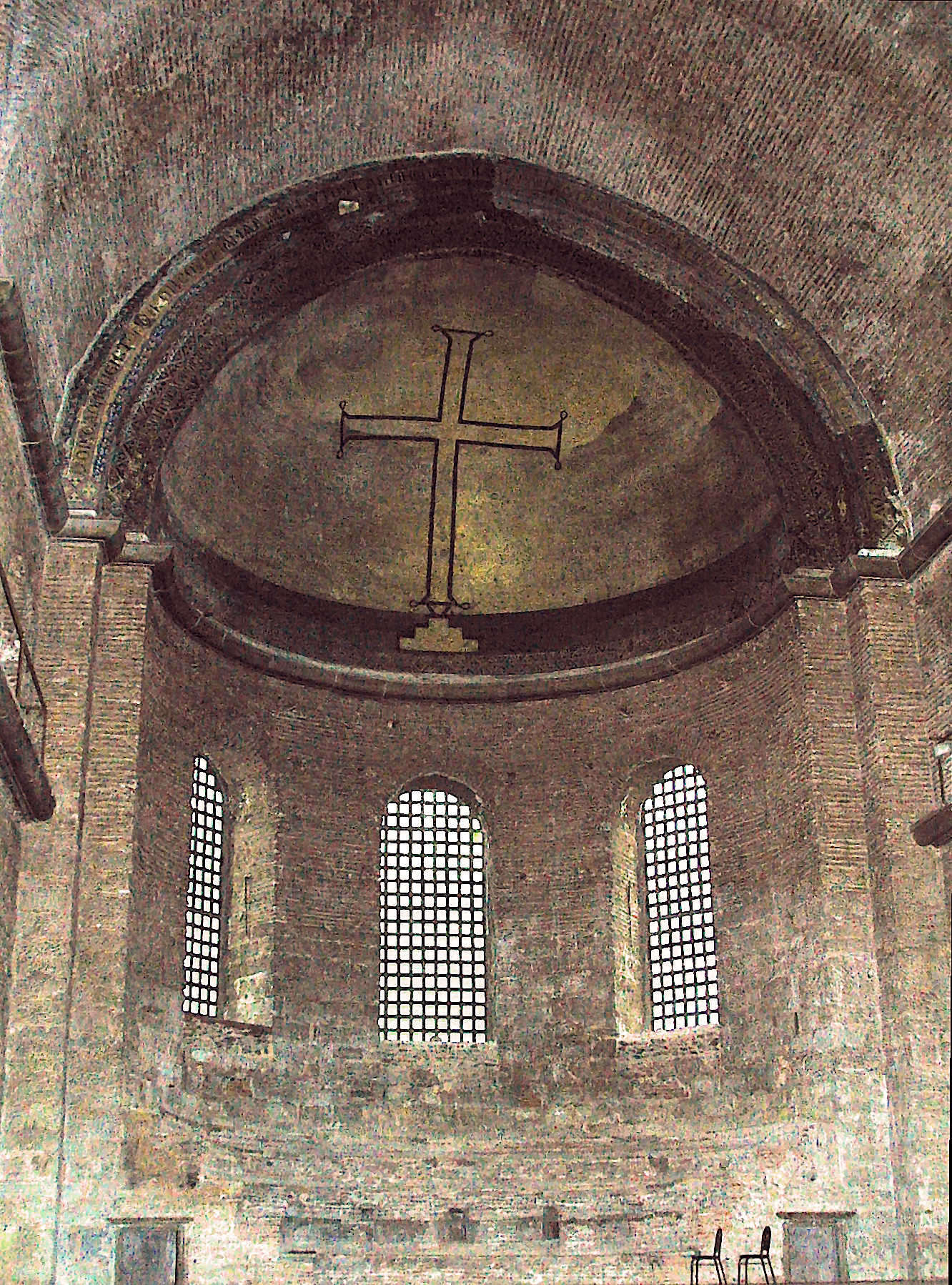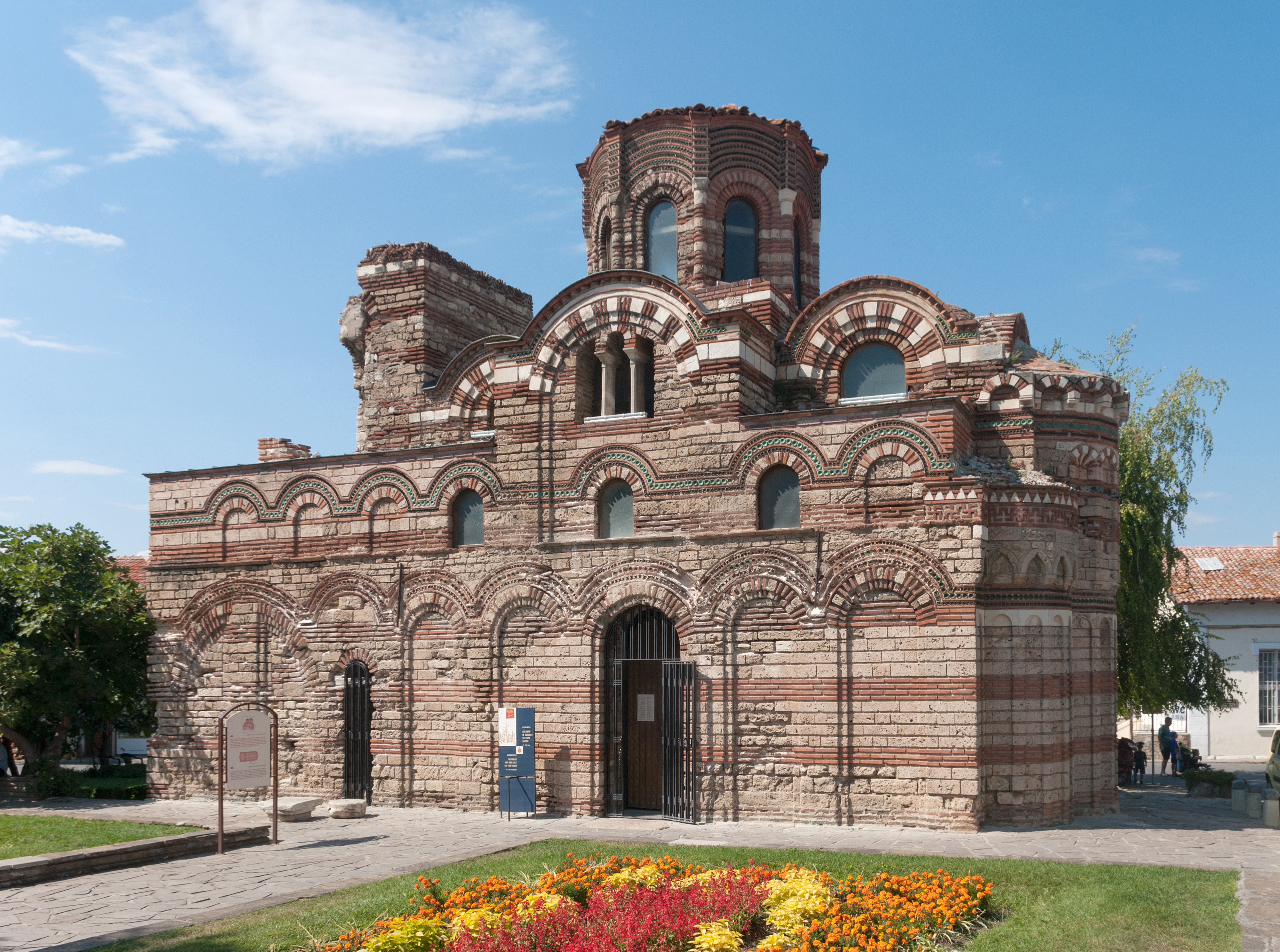|
Hagia Sophia, Thessaloniki
The Hagia Sophia (, ''Holy Wisdom'') is a church located in Thessaloniki, Greece. With its current structure dating from the 7th century, it is one of the oldest churches in the city still standing today. Because of its outstanding Byzantine art and architecture, in addition to its importance in early Christianity, it is one of several monuments in Thessaloniki listed as a UNESCO World Heritage Site in 1988. History Since the 3rd century there has been a church in the location of the current Hagia Sophia. In 620, that church collapsed, most likely because of an earthquake. Later in the 7th century, the present structure was erected, based on the Hagia Sophia in Constantinople (present-day Istanbul, Turkey). In 1205, when the Fourth Crusade captured the city, the Hagia Sophia was converted into the cathedral of Thessaloniki, which lasted until 1224, the year when the battalions of the Despotate of Epirus, under Theodore Komnenos Doukas, liberated the city. After the capture of Th ... [...More Info...] [...Related Items...] OR: [Wikipedia] [Google] [Baidu] |
Thessaloniki
Thessaloniki (; ), also known as Thessalonica (), Saloniki, Salonika, or Salonica (), is the second-largest city in Greece (with slightly over one million inhabitants in its Thessaloniki metropolitan area, metropolitan area) and the capital city, capital of the geographic regions of Greece, geographic region of Macedonia (Greece), Macedonia, the administrative regions of Greece, administrative region of Central Macedonia and the Decentralized Administration of Macedonia and Thrace. It is also known in Greek as , literally "the co-capital", a reference to its historical status as the "co-reigning" city () of the Byzantine Empire alongside Constantinople. Thessaloniki is located on the Thermaic Gulf, at the northwest corner of the Aegean Sea. It is bounded on the west by the Axios Delta National Park, delta of the Axios. The Thessaloniki (municipality), municipality of Thessaloniki, the historical centre, had a population of 319,045 in 2021, while the Thessaloniki metropolitan are ... [...More Info...] [...Related Items...] OR: [Wikipedia] [Google] [Baidu] |
Greek Cross
The Christian cross, with or without a figure of Jesus, Christ included, is the main religious symbol of Christianity. A cross with a figure of Christ affixed to it is termed a crucifix and the figure is often referred to as the ''corpus'' (Latin for "body"). The term ''Greek cross'' designates a cross with arms of equal length, as in a plus sign, while the Latin cross designates a cross with an elongated descending arm. Numerous other variants have been developed during the Middle Ages, medieval period. Christian crosses are used widely in churches, on top of church buildings, on bibles, in heraldry, in personal jewelry, on hilltops, and elsewhere as an attestation or other symbol of Christianity. Crosses are a prominent feature of Christian Cemetery, cemeteries, either carved on Headstone, gravestones or as sculpted Stele, stelae. Because of this, planting small crosses is sometimes used in countries of Christian culture to mark the site of fatal accidents, or, such as the Z ... [...More Info...] [...Related Items...] OR: [Wikipedia] [Google] [Baidu] |
Ascension Of Jesus
The Ascension of Jesus (anglicized from the Vulgate ) is the Christianity, Christian and Islamic belief that Jesus entering heaven alive, ascended to Heaven. Christian doctrine, as reflected in the major Christian creeds and confessional statements, holds that Jesus ascended after his Resurrection of Jesus, resurrection, where he was exaltation of Jesus, exalted as Lord and Christ (title), Christ, session of Christ, sitting at the right hand of God. Schools of Islamic theology, Islamic doctrine holds that Jesus directly ascended to heaven without dying or resurrecting. The Gospels and other New Testament writings imply resurrection and exaltation as a single event. The ascension is "more assumed than described," and only Luke–Acts, Luke and Acts contain direct accounts of it, but with different chronologies. In Christian art, the ascending Jesus is often shown blessing an earthly group below him, signifying the entire Church. The Feast of the Ascension is celebrated on the 40t ... [...More Info...] [...Related Items...] OR: [Wikipedia] [Google] [Baidu] |
Iconodules
Iconodulism (also iconoduly or iconodulia) designates the religious service to icons (kissing and honourable veneration, incense, and candlelight). The term comes from Neoclassical Greek εἰκονόδουλος (''eikonodoulos'') (from – ''icon (image)'' + – ''servant''), meaning "one who serves images (icons)". It is also referred to as iconophilism (also iconophily or iconophilia from – ''icon (image)'' + – ''love'') designating a positive attitude towards the religious use of icons. In the history of Christianity, iconodulism (or iconophilism) was manifested as a moderate position, between two extremes: iconoclasm (radical opposition to the use of icons) and iconolatry (idolatric veritable (full) adoration of icons). History In contrast to moderate or respectful adoration, various forms of latria of icons (''iconolatry'') were also starting to appear, mainly in popular worship. Since veritable (full) adoration was reserved for God alone, such an attitude towa ... [...More Info...] [...Related Items...] OR: [Wikipedia] [Google] [Baidu] |
Theotokos
''Theotokos'' ( Greek: ) is a title of Mary, mother of Jesus, used especially in Eastern Christianity. The usual Latin translations are or (approximately "parent (fem.) of God"). Familiar English translations are "Mother of God" or "God-bearer" – but these both have different literal equivalents in , and Θεοφόρος respectively. The title has been in use since the 3rd century, in the Syriac tradition (as ) in the Liturgy of Mari and Addai (3rd century)''Addai and Mari, Liturgy of''. Cross, F. L., ed. ''The Oxford Dictionary of the Christian Church''. Oxford University Press. 2005. and the Liturgy of St James (4th century). The Council of Ephesus in AD 431 decreed that Mary is the ''Theotokos'' because her son Jesus is both God and man: one divine person from two natures (divine and human) intimately and hypostatically united. The title of Mother of God (Greek: ) or Mother of Incarnate God, abbreviated ΜΡ ΘΥ (the first and last letter of main two words in ... [...More Info...] [...Related Items...] OR: [Wikipedia] [Google] [Baidu] |
Hagia Irene
Hagia Irene () or Hagia Eirene ( , "Holy Peace", ), sometimes known also as Saint Irene, is a former Eastern Orthodox church located in the outer courtyard of Topkapı Palace in Istanbul. It is the oldest known church structure in the city and one of the only Byzantine churches in Istanbul that was never converted into a mosque, alongside the Church of Saint Mary of the Mongols, as it was used as an arsenal for storing weapons until the 19th century. The Hagia Irene now operates as a museum and concert hall. Naming The church was dedicated to the peace of God, and is one of the three shrines which emperors devoted to God's attributes, together with Hagia Sophia (Wisdom) and Hagia Dynamis.Janin, pg. 106 Introduction Origins The building reputedly stands on the site of a pre-Christian temple. It ranks as the first church completed in Constantinople, before Hagia Sophia, during its transformation from a Greek trading colony to the eastern capital of the Roman Empire. According ... [...More Info...] [...Related Items...] OR: [Wikipedia] [Google] [Baidu] |
Mosaics
A mosaic () is a pattern or image made of small regular or irregular pieces of colored stone, glass or ceramic, held in place by plaster/Mortar (masonry), mortar, and covering a surface. Mosaics are often used as floor and wall decoration, and were particularly popular in the Ancient Rome, Ancient Roman world. Mosaic today includes not just murals and pavements, but also artwork, hobby crafts, and industrial and construction forms. Mosaics have a long history, starting in Mesopotamia in the 3rd millennium BC. Pebble mosaics were made in Tiryns in Mycenean civilisation, Mycenean Greece; mosaics with patterns and pictures became widespread in classical times, both in Ancient Greece and Ancient Rome. Early Christian basilicas from the 4th century onwards were decorated with wall and ceiling mosaics. Mosaic art flourished in the Byzantine Empire from the 6th to the 15th centuries; that tradition was adopted by the Norman dynasty, Norman Kingdom of Sicily in the 12th century, by th ... [...More Info...] [...Related Items...] OR: [Wikipedia] [Google] [Baidu] |
Apse
In architecture, an apse (: apses; from Latin , 'arch, vault'; from Ancient Greek , , 'arch'; sometimes written apsis; : apsides) is a semicircular recess covered with a hemispherical Vault (architecture), vault or semi-dome, also known as an ''exedra''. In Byzantine architecture, Byzantine, Romanesque architecture, Romanesque, and Gothic architecture, Gothic Architecture of cathedrals and great churches, Christian church architecture, church (including cathedral and abbey) architecture, the term is applied to a semi-circular or polygonal termination of the main building at the liturgical east and west, liturgical east end (where the altar is), regardless of the shape of the roof, which may be flat, sloping, domed, or hemispherical. Smaller apses are found elsewhere, especially in shrines. Definition An apse is a semicircular recess, often covered with a hemispherical vault. Commonly, the apse of a church, cathedral or basilica is the semicircular or polygonal termination to the ... [...More Info...] [...Related Items...] OR: [Wikipedia] [Google] [Baidu] |
Byzantine Iconoclasm
The Byzantine Iconoclasm () are two periods in the history of the Byzantine Empire when the use of religious images or icons was opposed by religious and imperial authorities within the Ecumenical Patriarchate (at the time still comprising the Roman-Latin and the Eastern-Orthodox traditions) and the temporal imperial hierarchy. The First Iconoclasm, as it is sometimes called, occurred between about 726 and 787, while the Second Iconoclasm occurred between 814 and 842. According to the traditional view, Byzantine Iconoclasm was started by a ban on religious images promulgated by the Byzantine Emperor Leo III the Isaurian, and continued under his successors. It was accompanied by widespread destruction of religious images and persecution of supporters of the veneration of images. The Papacy remained firmly in support of the use of religious images throughout the period, and the whole episode widened the East–West Schism, growing divergence between the Byzantine and Carolingian Em ... [...More Info...] [...Related Items...] OR: [Wikipedia] [Google] [Baidu] |
Byzantine Architecture
Byzantine architecture is the architecture of the Byzantine Empire, or Eastern Roman Empire, usually dated from 330 AD, when Constantine the Great established a new Roman capital in Byzantium, which became Constantinople, until the Fall of Constantinople, fall of the Byzantine Empire in 1453. There was initially no hard line between the Byzantine and Roman Empires, and early Byzantine architecture is stylistically and structurally indistinguishable from late Roman architecture. The style continued to be based on arches, vaults and domes, often on a large scale. Wall mosaics with gold backgrounds became standard for the grandest buildings, with frescos a cheaper alternative. The richest interiors were finished with thin plates of marble or coloured and patterned stone. Some of the columns were also made of marble. Other widely used materials were bricks and stone. Mosaics made of stone or glass tesserae were also elements of interior architecture. Precious wood furniture, like be ... [...More Info...] [...Related Items...] OR: [Wikipedia] [Google] [Baidu] |
Dormition Of The Theotokos
The Dormition of the Mother of God is a Great Feast of the Eastern Orthodox, Oriental Orthodox, and Eastern Catholic Churches (except the East Syriac churches). It celebrates the "falling asleep" (death) of Mary the '' Theotokos'' ("Mother of God", literally translated as ''God-bearer''), and her being taken up into heaven. The Feast of the Dormition is observed on August 15, which for the churches using the Julian calendar corresponds to August 28 on the Gregorian calendar. The Armenian Apostolic Church celebrates the Dormition not on a fixed date, but on the Sunday nearest 15 August. In Western Churches the corresponding feast is known as the Assumption of Mary, with the exception of the Scottish Episcopal Church, which has traditionally celebrated the Falling Asleep of the Blessed Virgin Mary on August 15. Christian canonical scriptures do not record the death or Dormition of Mary. Hippolytus of Thebes, a 7th- or 8th-century author, writes in his partially preserved c ... [...More Info...] [...Related Items...] OR: [Wikipedia] [Google] [Baidu] |






